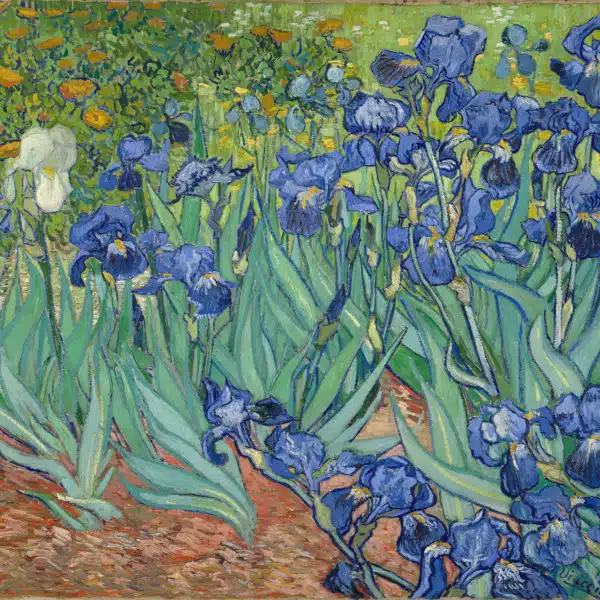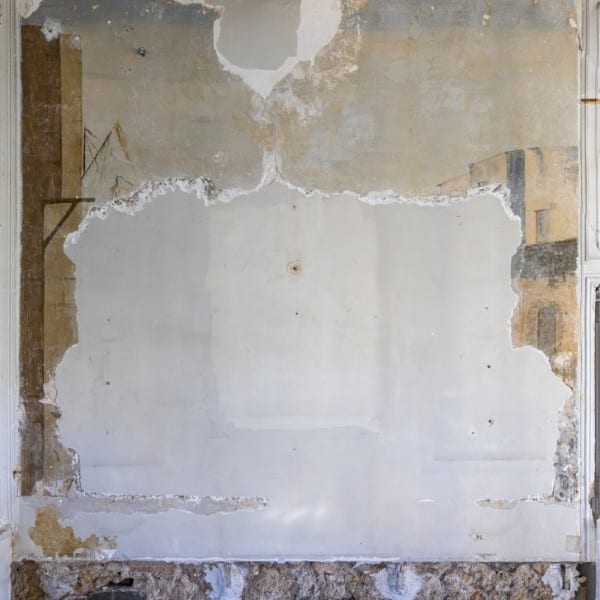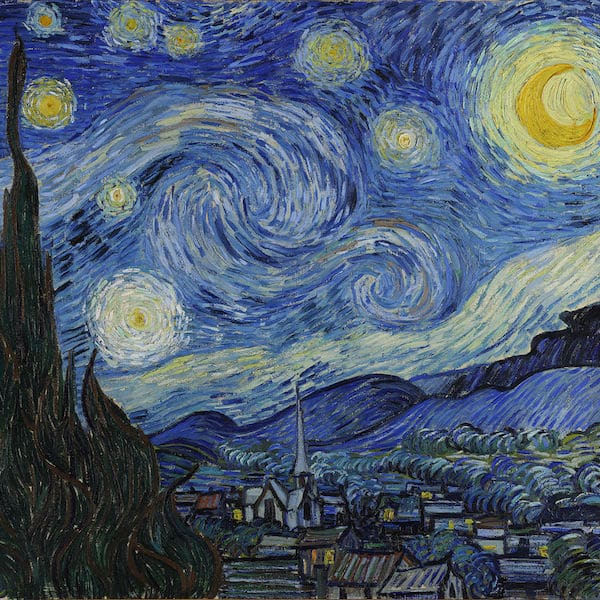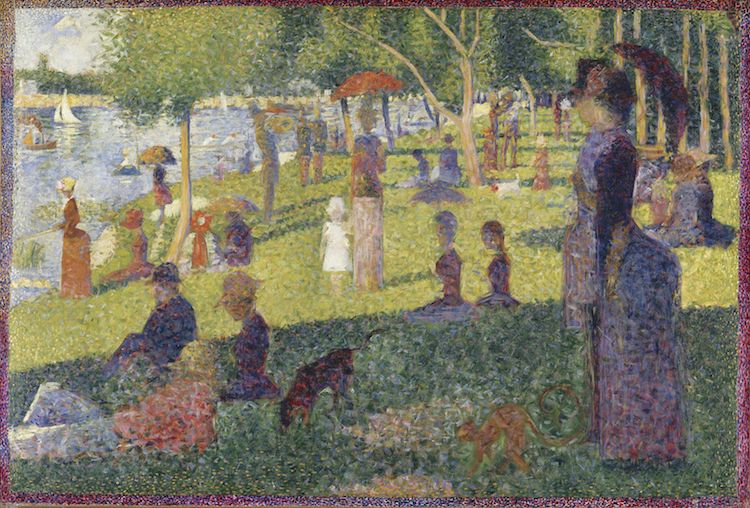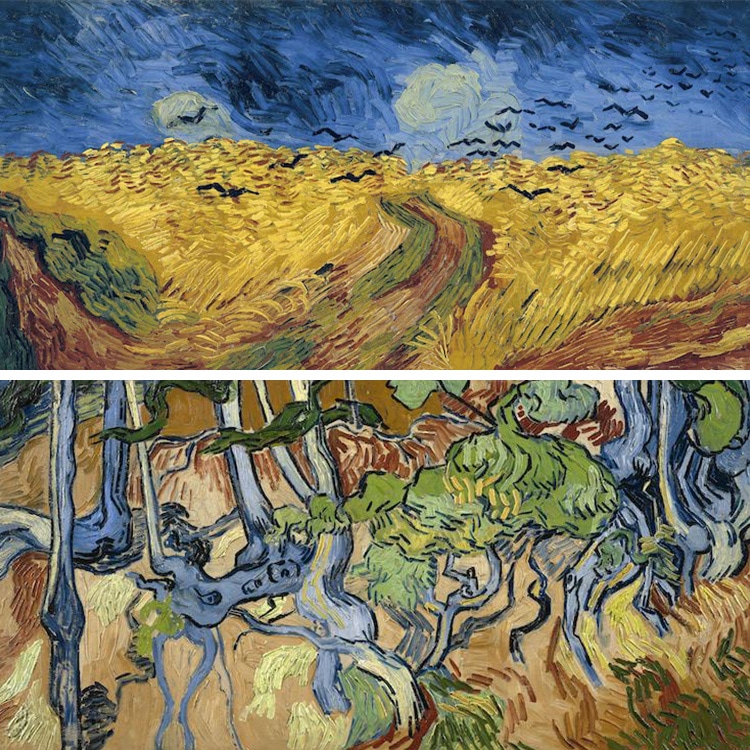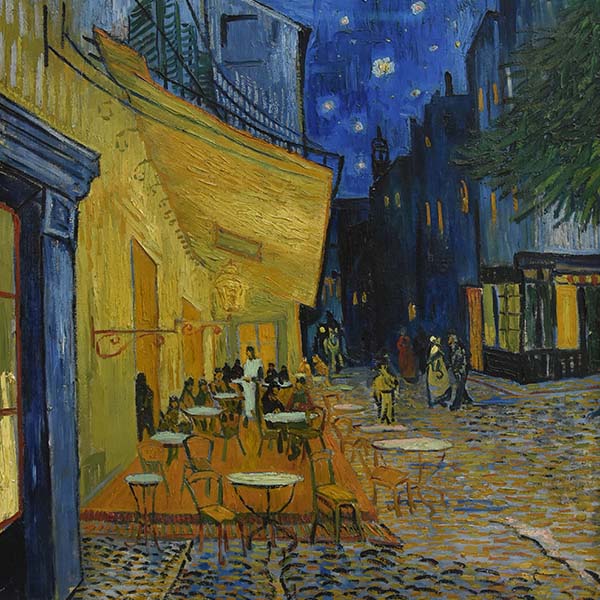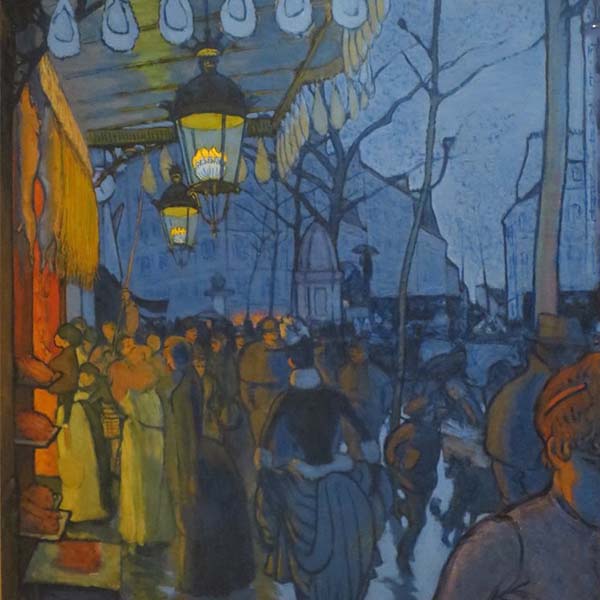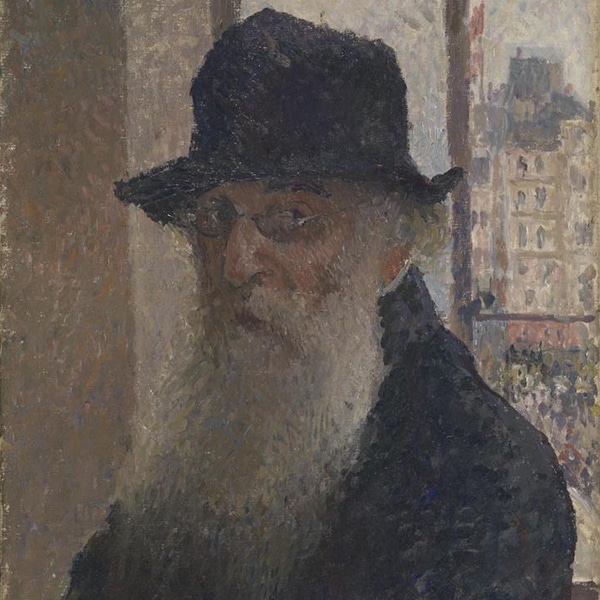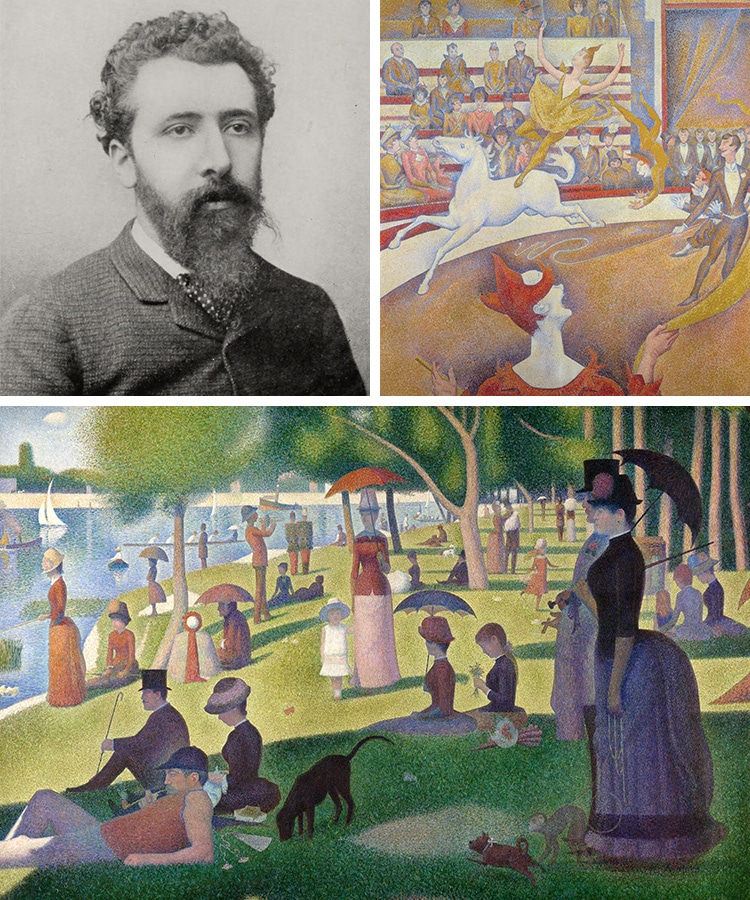
By the late 1800s, art had changed drastically. Instead of subjecting themselves to the ideals set by the Paris Salon, radical artists began creating and exhibiting rejected paintings that captured fleeting moments. These artists—who would become known as the Impressionists—fueled a wave of innovation in their contemporaries. One of these figures was Georges Seurat, who is credited with pioneering the Pointillist style.
The Paris-born artist combined his classical art education and interest in color theory to create a highly individualist style that is recognized all around the world. His most famous painting, A Sunday Afternoon on the Grande Jatte, epitomizes this unique approach, featuring numerous dots of color that blend together when viewed from afar.
Here we will learn more about this pioneering Post-Impressionist artist and how he invented Pointillism.
Who was Georges Seurat?
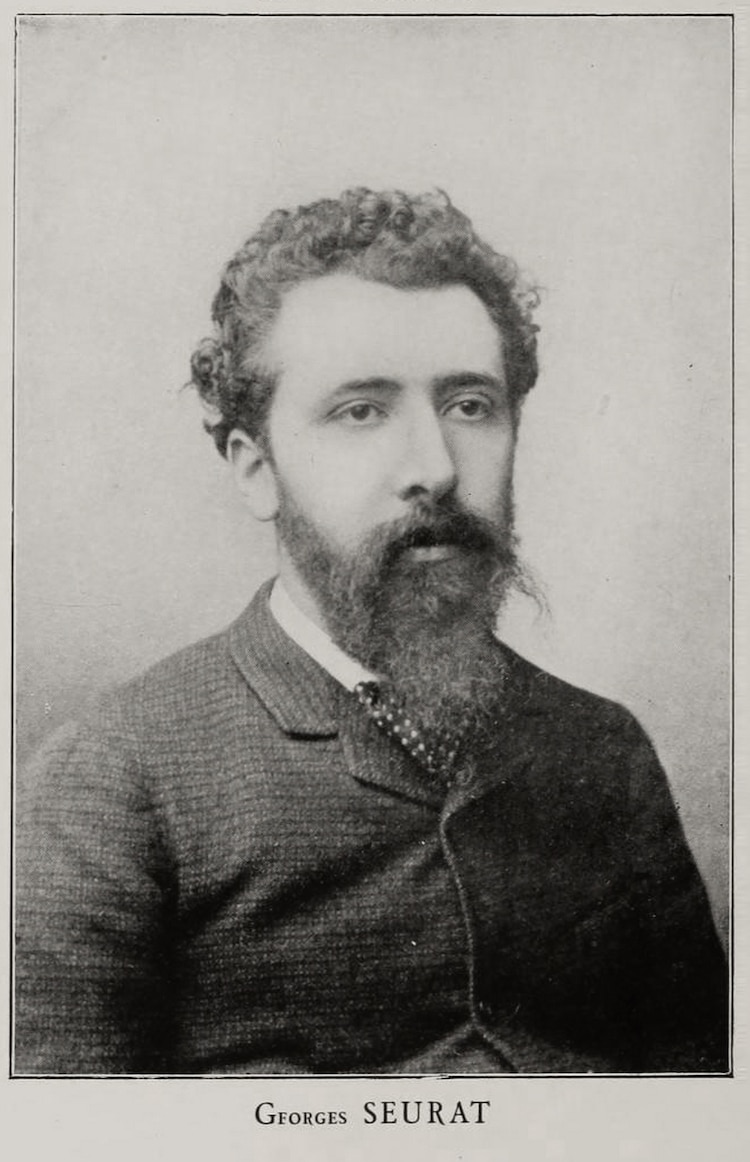
Photograph of of Georges Seurat, 1888 (Photo: Wikimedia Commons, Public domain)
French artist Georges Seurat (1859–1891) was a trailblazing Neo-Impressionist painter credited with inventing the Pointillist style. Born in Paris to a prominent family, he received academic training in fine art at École des Beaux-Arts, learning from the work of masters like Ingres and Delacroix. Later, when the artist was in his early 20s, he became interested in color theory and meticulously applied himself to inventing a new way of using color—resulting in Pointillism. His masterpiece A Sunday Afternoon on the Grande Jatte is the most famous and oft-cited example of this approach.
Early Career
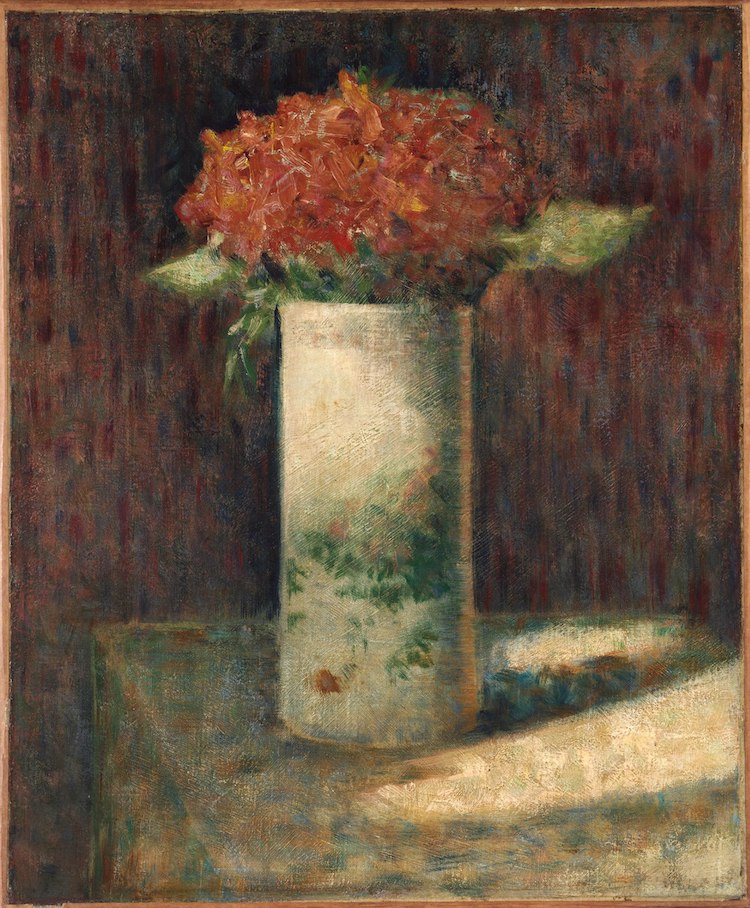
Georges Seurat, “Vase of Flowers,” 1879–1881 (Photo: Wikimedia Commons, Public domain)
In the early 1880s, the impact of the rebellious Impressionist movement was spreading through Paris. Seurat's early works display an interest in this new style, featuring looser brushstrokes and numerous experiments in the application of color. By 1882, he was already applying hues in thick patches of color that blended together to create a unique texture.
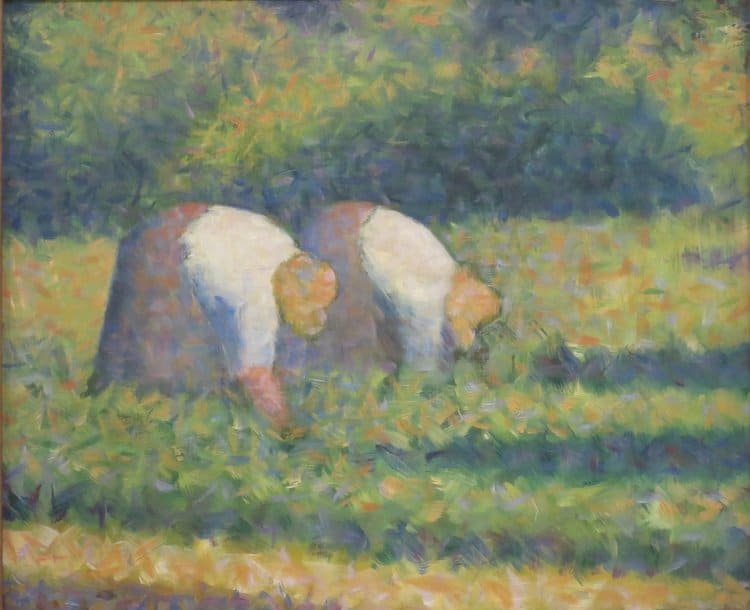
Georges Seurat, “Farmers at Work,” 1882 (Photo: Wikimedia Commons, Public domain)
Bathers at Asnières
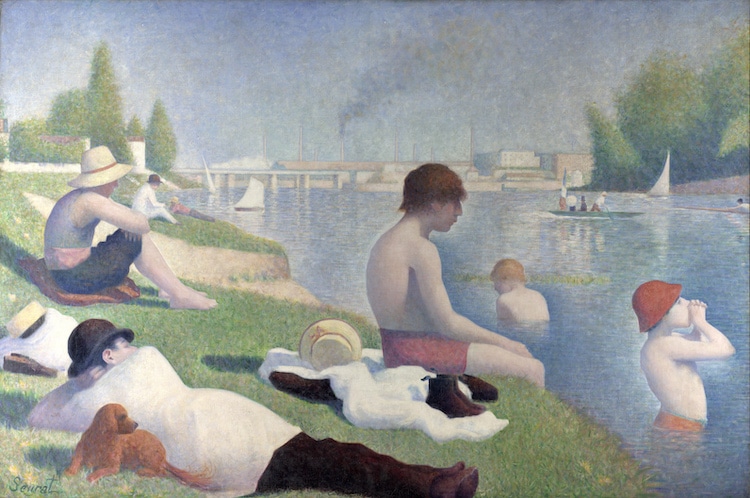
Georges Seurat, “Bathers at Asnières,” 1884 (Photo: National Gallery via Wikimedia Commons, Public domain)
Seurat completed his first significant work entitled Bathers at Asnières in 1884. This large-scale painting demonstrates the artist's interest in the delicate tones of Impressionism—particularly in the trees and water—while also highlighting the artist's distinct way of smoothening his figures into soft sculptural forms.
Unsurprisingly, this work was rejected from the prestigious Paris Salon for its avant-garde approach. This led Seurat to display it alongside the Impressionists' work in the Groupe des Artistes Indépendants the same year. However, he did not remain in the group for long and ended up forming his own contingent with some of his contemporaries like Paul Signac called Société des Artistes Indépendants.
Inventing Pointillism
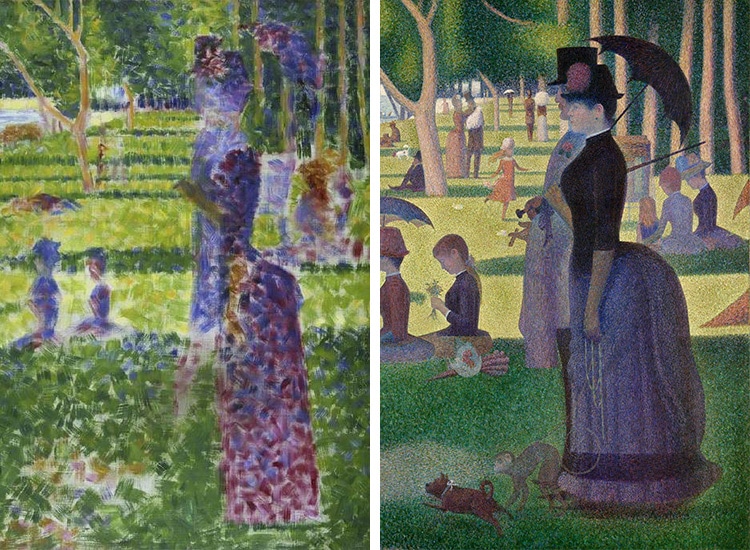
Left: Georges Seurat, Study for “A Sunday on the Island of La Grande Latte,” 1886-1888 (Photo: Fitzwilliam Museum via Wikimedia Commons, Public domain)
Right: Georges Seurat, Detail of “A Sunday Afternoon on the Island of La Grande Jatte,” 1884–1886 (Photo: Art Institute of Chicago via Wikimedia Commons, Public domain)
After completing Bathers at Asnières, Seurat continued to make changes to his painting methods. Instead of blending pigments on a palette or on the canvas, he began to arrange colors individually on the canvas. This technique of applying paint in distinct dots of color became known as Pointillism after an art critic used the term in the late 1880s to ridicule its appearance. However, it ultimately became the name that made this unique style famous.
In Pointillist works, the tightly-packed dots can be made out when viewing the painting from up close, however, the colors will blend together and create a detailed picture when standing further away.
A Sunday Afternoon on the Island of La Grande Jatte
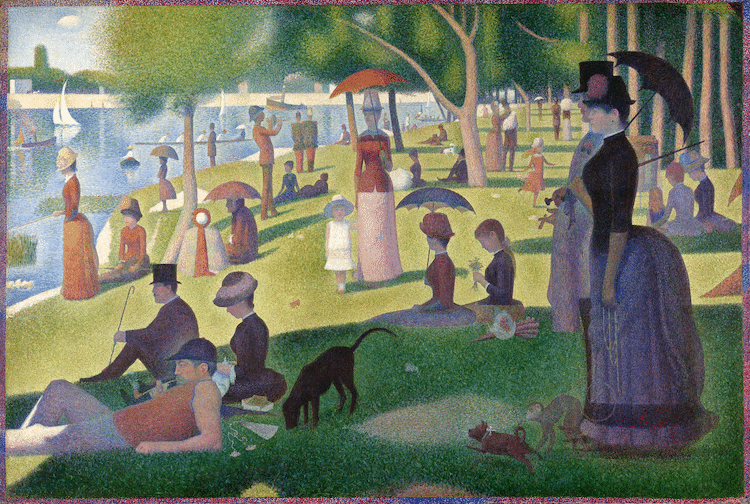
Georges Seurat, “A Sunday Afternoon on the Island of La Grande Jatte,” 1884–1886 (Photo: Art Institute of Chicago via Wikimedia Commons, Public domain)
Undoubtedly Seurat's most famous painting, A Sunday Afternoon on the Island of La Grande Jatte is a monumental piece depicting the scenery surrounding a Seine River island situated to the west of Paris. He created numerous sketches in color en plein air in preparation for this piece, carefully studying the colors that would be used to create this complex scene. The Pointillist technique required a detailed-oriented approach, so Seurat spent considerable time ensuring he was satisfied with the result.
“Confronting his subject,” Paul Signac explained, “Seurat, before touching his little panel with paint, scrutinizes, compares, looks with half shut eyes at the play of light and shadow, observes contrasts, isolates reflections, plays for a long time with the cover of the box which serves as his palette, then…he slices from his little heap of colors arranged in the order of the spectrum the various colored elements which form the tint destined best to convey the mystery he has glimpsed. Execution follows on observation, stroke by stroke the panel is covered.”
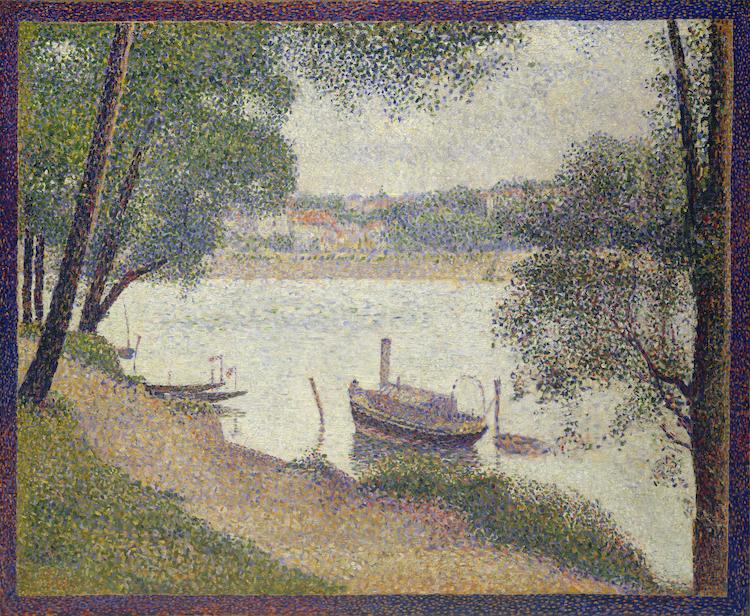
Georges Seurat, “Gray Weather, Grande Jatte,” 1888 (Photo: The Met via Wikimedia Commons, Public domain)
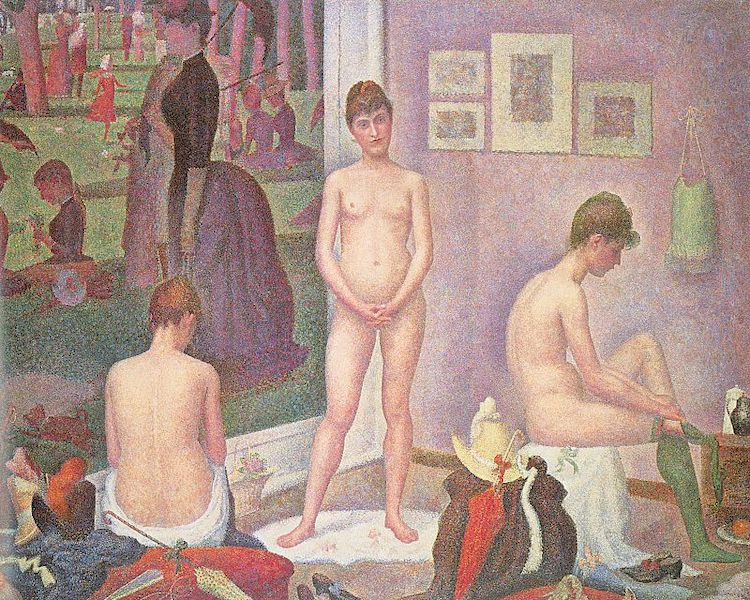
Georges Seurat, “The Models,” 1886-1888 (Photo: Barnes Foundation via Wikimedia Commons, Public domain)
Late Artwork
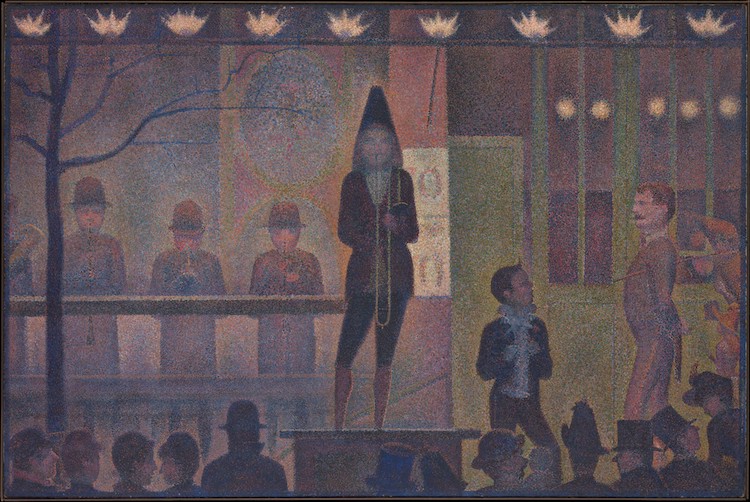
Georges Seurat, “The Circus Parade,” 1887–1888 (Photo: The Met via Wikimedia Commons, Public domain)
After A Sunday Afternoon on the Grande Jatte, Seurat continued to apply and perfect pointillism in other paintings. The subject matter from these late artworks mostly centers around performing arts including dancing, music, and circuses.
In these pieces, he simplifies his figures even further—finding the purest forms and repeating them without emphasis on details. As a result, these paintings possess a tapestry-like quality to them.
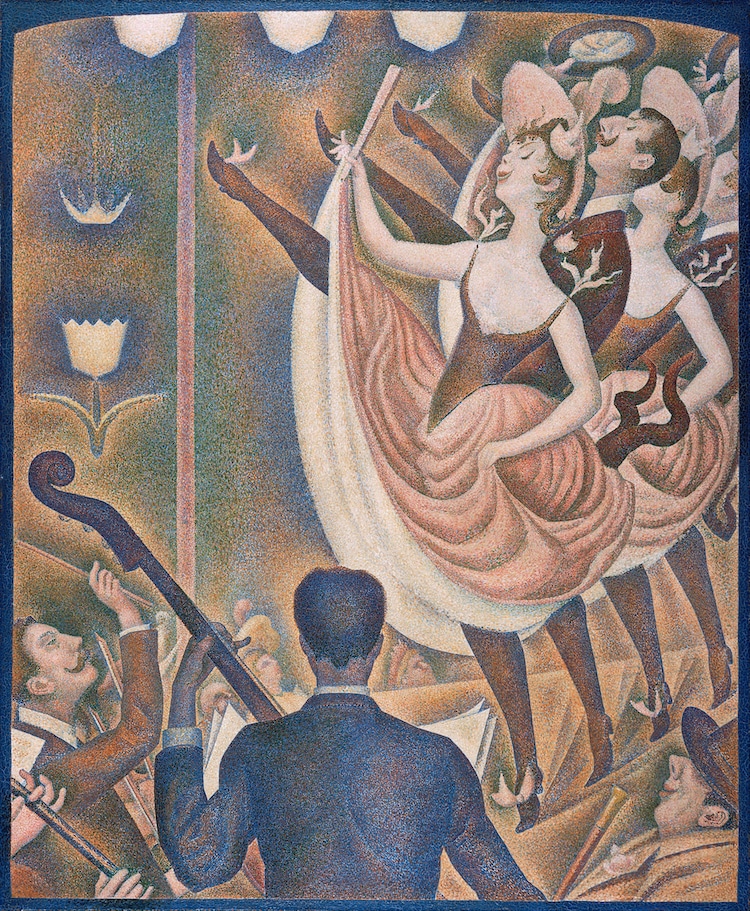
Georges Seurat, “La Chahut,” 1889-1890 (Photo: Kröller-Müller Museum via Wikimedia Commons, Public domain)
The Circus was Seurat's last major work, which was left unfinished when the artist died in 1891 at the age of 31.
This piece is significant for its use of the three primary colors (red, yellow, and blue) in conjunction with white. Here, Seurat's stylized figures have been solidified into frozen, puppet-like poses, making the scene appear as though it were suspended in time.

Georges Seurat, “The Circus,” 1891 (Photo: Musée d'Orsay via Wikimedia Commons, Public domain)
Legacy
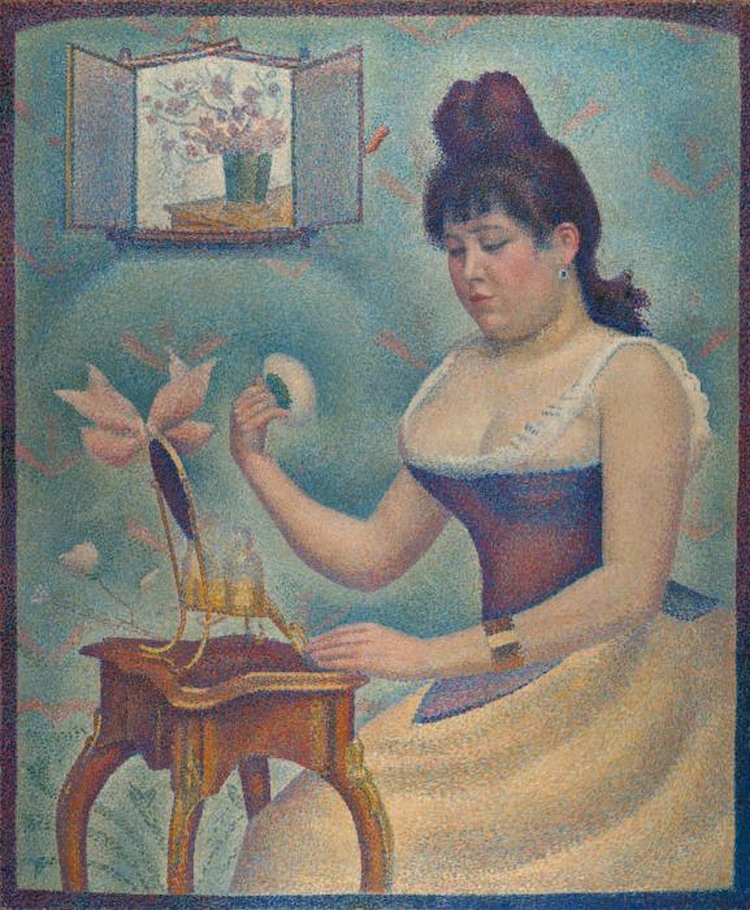
Georges Seurat, “Young Woman Powdering Herself,” 1889-1890 (Photo: Courtauld Institute of Art via Wikimedia Commons, Public domain)
Seurat's highly individual Pointillist style had a lasting influence on future artists. In particular, Cubists found inspiration in his scientific approach to color, which they would instead apply to shapes and forms.
Related Articles:
18 Famous French Painters Every Art Lover Should Know About
5 Sincere Artist Friendships That Helped Famous Creatives To Nurture Their Craft
Learn About the Colorful Art of French Post-Impressionist Émile Bernard
What Is Cloisonnism? This Post-Impressionist Style Is Inspired by Stained Glass and Japanese Prints











































































